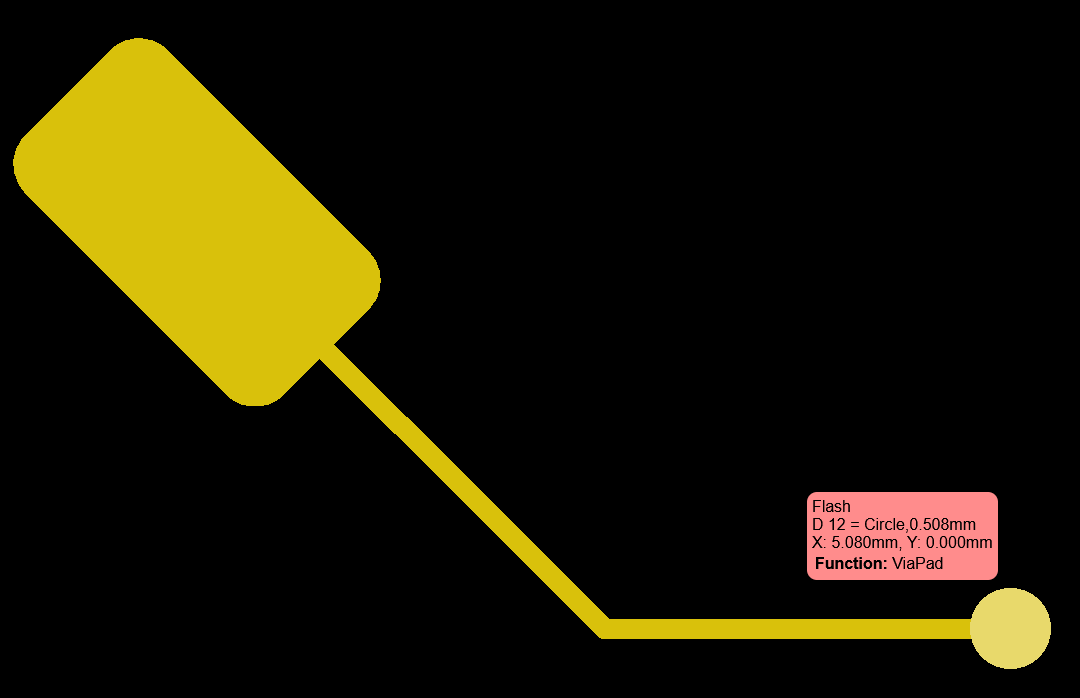A Python library for writing Gerber files.
- The API is much simpler than the Gerber format specification - 8 pages vs 200.
- No need to read the 200 page Gerber format specification.
- All common pad shapes are built-in.
- User-defined pads shapes are easily created.
- 100% compliance with revision 2023.08 of the Gerber Layer Format Specification.
- Conservative, robust output files.
- Risky constructs failing in some buggy applications are avoided.
- Standardized meta information for fabrication, such as which pads are vias.
- Input parameters are checked for compliance with the Gerber spec.
- Stateless input (the gerber_writer takes care of the Gerber states).
Example:
from gerber_writer import DataLayer, Circle, RoundedRectangle
trace_width = 0.127
via_pad = Circle(0.508, 'ViaPad')
IC17_toe = RoundedRectangle(1.257, 2.286, 0.254, 'SMDPad,CuDef')
toe_point = (0, 2.54)
via_point = (5.08, 0)
top = DataLayer('Copper,L1,Top,Signal')
top.add_pad(IC17_toe, toe_point, angle=45)
top.add_trace_line(toe_point, (2.54, 0), trace_width, 'Conductor')
top.add_trace_line((2.54, 0), via_point, trace_width, 'Conductor')
top.add_pad(via_pad, via_point)
with open('gerbers\gerber_writer_example_small.gbr', 'w') as outfile:
top.dump_gerber(outfile)
Windows:
$ py -m pip install gerber_writer
Linux:
$ python3 -m pip install gerber_writer
- Python 3.9 or higher
- Standard library only.
- OS independent.
Apache 2.0 license
